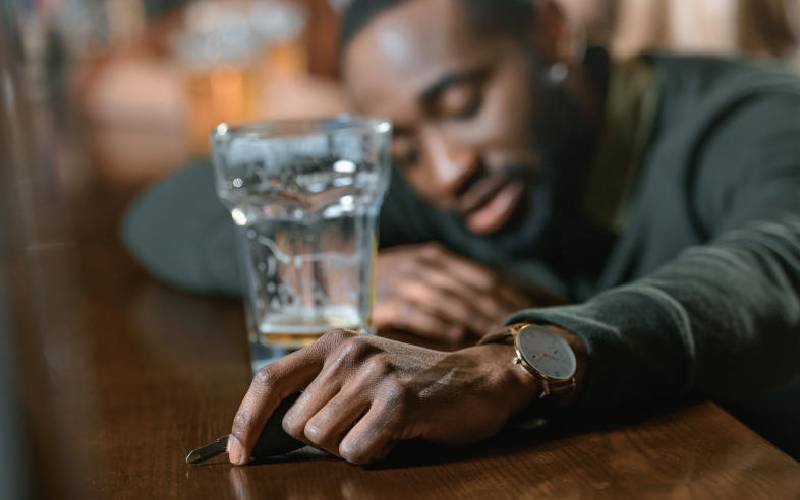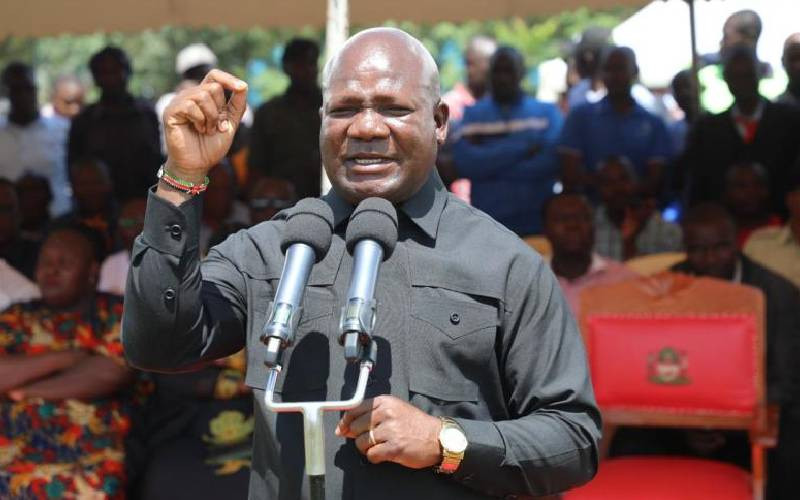 |
|
Griffin and Starehe Boys students celebrate examination results. |
By PETER NGANGI NGULI
His strength was unebbing — in his voice, passion, conviction and beliefs. Talk of a motivator. He inspired thousands of needy children. The late Dr Geoffrey Griffin was known across Africa as one of the continent’s premiere educators of children. In 2005, the world lost a man whose inspiration and dedication made poverty history for thousands of young Kenyans.
His efforts are responsible for not only creating the best school of excellence on the continent, but also a home for thousands of destitute children. I first met Dr Griffin, and his lovely cat, in his office when I joined Form One. I was barefoot and he bought me my first ever leather shoes. Twelve years later, I met Griffin in his office to show him my overseas postgraduate credentials from Cambridge University, one of the leading universities in the world!
Like other destitute children that Griffin helped, I was able to get a first class education and stand on my own two feet. His legacy is unparalleled and from desperate hopeless lives, he created top achieavers.
Geoffrey William Griffin was born on June 13, 1933 in Eldoret to an English police officer who served in Kenya from 1919, and an English mother, born in India. Griffin was educated at Kitale Primary School and then the Prince of Wales School where he ended up as the school editor and headed the school’s scout troop, later qualifying as Kenya’s first King’s Scout. When he left school, he became a cadet in the Survey of Kenya.
When the State of Emergency was declared in 1952, Griffin completed training with the Kenya Regiment, served in the Special Police Reserve and was later commissioned into the 3 KAR.
Eventually, he turned his attention to what good he could do for the betterment of Kenya’s future. Accordingly, although the fighting still continued, he applied for a transfer to take over the administration of the juvenile segment of a detention facility.
The facility, known as Manyani, was a grim and abusive place. In addition to holding adult Mau Mau prisoners-of-war, Manyani also imprisoned minors under the age of 16.
Griffin’s destiny
Under Griffin’s leadership, Manyani slowly began to transform, a process that was accelerated when he received permission to move all youth under the age of 16 to a new facility. Over the next several years, this new location called Wamamu, would slowly change from a place that resembled a high-security prison to one that looked like a school.
Among 2,000 juvenile detainees whom Griffin rescued from the Manyani Prison Camp were two boys: Geoffrey Geturo and Joseph Kamiru Gikubu. For those in charge of Manyani, Mau Mau rebels such as Gikubu were only viewed as animals, who were treated with brutality. However, Griffin had a different idea about how the detainees should be treated - with generosity and humanity.
Recognising their leadership potential, Griffin soon promoted the two former prisoners to positions of trust and authority. The two men were involved with every facet of the school from its start to the present day, with Gatama being in charge of the school until his death in 1990 and Gikubu taking over the position of Director upon Griffin’s death.
In 1959, Geoffrey Griffin rescued a handful of destitute boys found roaming the streets of Nairobi. It was during this era of the Mau Mau freedom fighters, when orphaned children were forced to flee ravaged homes in the countryside and head for the city. From this simple action grew the Starehe Boys’ Centre, an institution that became one of the most successful schools on the African continent.
In the beginning, Starehe was nothing more than two ragged tin huts donated by Kenya Shell and BP, which served as homes for 17 former street children. It was presented to the public as a community recreation centre in order to escape the bureaucratic regulations and administrative burdens placed on schools. Meanwhile, the programme’s underpaid staff was working overtime to give a complete academic, moral, spiritual and practical education. The early days of the centre were extremely difficult, with the country being thrown into turmoil and suspicion growing over the ‘criminals’ in Griffin’s care. Griffin rescued boys loitering on the streets of Nairobi. Many were helpless children, especially boys, left as orphans after their parents died or were detained in camps during the Mau Mau struggles.
Starehe Boys Centre is born
Stay informed. Subscribe to our newsletter
Over the years, however, the centre began to gain reputation, first as an equal, and then as superior to many of the more conventional schools around it. Where students once had to be forced or convinced to attend, it now became a place that was overloaded with eager applicants.
In 1964, the country’s first President, Jomo Kenyatta approached Dr Griffin and encouraged him to begin the National Youth Service (NYS). Hence in the same year, Griffin started the NYS and he remained its founding director till 1998. His work brought many honours. The two original huts still stand at the centre of Starehe School, now a beautiful campus with hall, chapel, library, dormitories and classrooms.
Griffin died on June 28 2005, but his legacy lives through the professionals he helped build.
 The Standard Group Plc is a
multi-media organization with investments in media platforms spanning newspaper
print operations, television, radio broadcasting, digital and online services. The
Standard Group is recognized as a leading multi-media house in Kenya with a key
influence in matters of national and international interest.
The Standard Group Plc is a
multi-media organization with investments in media platforms spanning newspaper
print operations, television, radio broadcasting, digital and online services. The
Standard Group is recognized as a leading multi-media house in Kenya with a key
influence in matters of national and international interest.
 The Standard Group Plc is a
multi-media organization with investments in media platforms spanning newspaper
print operations, television, radio broadcasting, digital and online services. The
Standard Group is recognized as a leading multi-media house in Kenya with a key
influence in matters of national and international interest.
The Standard Group Plc is a
multi-media organization with investments in media platforms spanning newspaper
print operations, television, radio broadcasting, digital and online services. The
Standard Group is recognized as a leading multi-media house in Kenya with a key
influence in matters of national and international interest.








